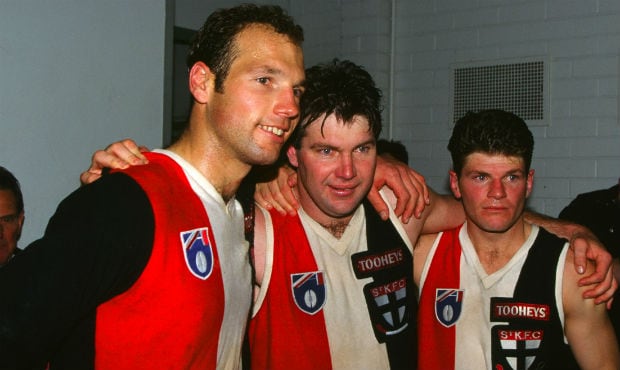In the first instalment of Russell Holmeshy's top 25, St Kilda's historian profiles the players ranked between 21 and 25.
25. Nicky Winmar ( - )
Born: September 23, 1965
Debut: Round 1, 1987
Games: 251 (230 St Kilda, 21 Western Bulldogs)
Goals: 317
Height: 183cm
Weight: 81kg
The brilliant former South Fremantle player at various times exhilarated, dismayed, and bewildered the football public.
When the Eagles were putting a side together they were interested in 35 players and had to cut back to 30. Winmar was one of the five that missed out. He was then regarded as inconsistent and unreliable, but at St Kilda he was a changed man, running second in the best and fairest in his first two years and then winning the award in 1989.
He won it again in 1995. His silky skills covered the full range of football. A breathtaking mark, glorious kick and magical in his ball handling, Winmar’s tackling was also superb.
While most Western Australian’s struggled in the wet, Winmar played some of his finest games in slushy conditions – a skill gained from the days when he and his brother turned on the hoses and pretended it was a muddy ground in Melbourne.
He played as a half-forward and winger for St Kilda and for half a season, filled in at full-forward for Tony Lockett.
In 1990 he turned to religion in a much publicised move and seemed to wrestle with the change in lifestyle. Out of character he was suspended for 10 weeks on a kicking and eye gauging charge. St Kilda was on the verge of swapping him, but he fought back to regain his form and was one of the best players in the competition in 1992.
At the start of 1993 he was in scintillating form and led in most media awards. He was then involved in a huge controversy when St Kilda beat Collingwood and he showed his skin colour to the Victoria Park crowd that had been shouting racist taunts all day.
Some players on the ground thought initially that he was signifying that the team had guts, But Winmar said later: “I said I was black and I was proud.”
In 1997 he became the first Aboriginal player to reach the 200 game mark, but along the way was dropped twice for disciplinary reasons. During this season he found it hard to cover more ground, so was used more in a forward pocket rather than a wing or a flank.
He had a topsy-turvy 1998 campaign but became an important player in September finals series.
Later St Kilda finally parted company with him and he was picked up by the Bulldogs.
Winmar represented Western Australia eight times and was an All-Australian in 1991 and 1995.

24. Stewart Loewe ( - )
Born: May 23, 1968
Debut: Round 9, 1986
Games: 321
Goals: 594
Height: 194cm
Weight: 108kg
Dubbed as the man with the biggest hands in football, Loewe was one of the few players to slip through Hawthorn's net in the 1980s. Recruited from Mt Eliza after having been in the Hawks' junior development squad at one stage Loewe progressed from St Kilda's under-19s through to the seniors in a matter of weeks. He goaled with his first kick in League football, but while his marking ability was conspicuous from the start his kicking was woeful. |
He worked tirelessly on his awkward style and gradually developed an acceptable standard of accuracy. Loewe's dedication on the training track made him one of the team's leaders and he had an exceptional year in 1990 averaging double figure tallies of marks per game. He was appointed co-captain with Nathan Burke at the start of 1996 and he stepped into the role of a team leader in every sense of the word, staying in the job until he stepped aside after the 1998 season. |
In 1997 Stewart Loewe may not have been so dominant as in other years, but in terms of value to the club his contribution had never been greater. The pivotal role he played at centre half-forward as one of the three or four marking options in attack was central to the team's game plan. Loewe's strength lay in contesting every issue and either marking and setting up plays or bringing the ball to ground for the crumbers. |
He also discovered a new dimension to his game - the art of ruckwork - thanks to the guidance of ruck coach Peter Keenan. The new found skill was invaluable when Everitt was injured in the qualifying final. Stewart Loewe put his hand up to be counted and rallied the troops. |
Back related hamstring problems hampered him in subsequent years, but he continued to be productive. He had a bitter-sweet 2001 when he passed the landmark of 300 games, but a few weeks later injured his knee and missed the rest of the year. As he pondered his future Loewe reflected: "One thing that I'll rest easily about is that I've given 110 percent. |
I've got everything out of the body that I've been given." He slotted into full-forward for 76 goals in 1995 and 90 in 1996. St Kilda's best and fairest in 1990 he was runner-up four times, an All-Australian in 1990, 1991 and 1992 and won the E J Whitten Medal in 1992. He represented Victoria 11 times. |

23. Kevin ‘Cowboy’ Neale (20)
Born: July 18, 1945
Debut: Round 15, 1966
Games: 256
Goals: 301
Height: 189cm
Weight: 99kg
A burly, tough character from South Warrnambool who was one of the most popular players in St Kilda's history. Most of his first year was spent as a backman, but in 1966 he was shifted to full-forward where his strength and 'stay in the square' approach fitted in with the system of giving Baldock plenty of space. His kicking wasn't always reliable and he preceded an 8.1 effort with a frustrating 2.7. |
He had played in the losing 1965 grand final side in defence, but he was a key forward in the 1966 finals series, booting five goals in the history making grand final win. In 1967 he produced one of his most brilliant efforts against Essendon when he kicked six goals in the third quarter. He struggled in 1970 and many people thought his best football might have been behind him, but he proved that wrong and had a fine season in 1971 mainly as a defender. |
Apart from the occasional foray into attack, that was where he stayed for the remainder of his career. After Morrow retired in 1966 he assumed a greater role as the team's enforcer and while he was a folk hero at Moorabbin, he was considered a villain by the opposition. Off the field opponents regarded him as one of the nicest blokes in the game. |
He said that he was considering retirement in 1976 because: "The game was run, run, run and that's not really my style." In his younger days he tipped the scales at 14 and a half stone, but this ballooned to just under 18 stone. He cut that back to 16.10 in his last couple of years before going to Canberra as coach of Ainslie. He was tremendously popular in the ACT and led a local side in a victory over a Victorian B team. |
His 256 games was a St Kilda club record until broken by his mate Barry Breen and 16 finals appearances which was a club record until broken by Robert Harvey. He won St Kilda's best and fairest in 1973 and was club leading goalkicker four times. He represented a Victorian B team in 1967. |
22. Daryl Griffiths (19)
Born: November 6, 1945
Debut: Round 8, 1963
Games: 123
Goals: 40
Height: 183cm
Weight: 83kg
Came from Terang as a boom full-forward and goaled with his first kick. Moments later he was flattened by "Bluey" Shelton and left the field with a broken collarbone. It was the first of a number of bad knocks. |
When he resumed the next year he quickly developed into a fine half-back who could also hold down the centre position when Stewart was out. He was also a fine ruck-rover in the 1966 flag win. Although underrated at first he went on to represent Victoria in 1967, 1969 and 1970. |
He won the club best and fairest in 1970 then tried to win a clearance to South Fremantle (WA). He stood out of football for a year and later represented his new state while playing at Claremont. |
21. Trevor Barker (18)
Born: October 7, 1956
Died: April 25, 1996
Debut: Round 2, 1975
Games: 230
Goals: 134
Height: 183cm
Weight: 78kg
A tremendously popular player, Barker joined the Saints from Cheltenham and was immediately a star. He was one of the first former Little League players to graduate to the big time. Initially a half-forward flanker, Barker's natural athleticism enabled him to soar for spectacular marks. |
Despite his slender build he was tried as a defender early in 1976 and his judgement and spring countered full-forwards who were invariably bigger and more strongly built. Barker was also a copybook tackler. He made the first of seven state appearances in 1977 after winning the Saints' best and fairest award in 1976. |
Barker several times rejected offers to join other clubs and at one stage was in the Melbourne boardroom poised to sign with coach Ron Barassi. His loyalty to St Kilda was unquestionable even when he missed out on financial returns and other bonuses such as the car which was a prize for best and fairest, but was raffled to raise money to defend the Doug Cox case. He was a worthy captain of the club from 1983 to 1986. |
Because of the weakness of the St Kilda side he was usually required to take on key position roles that demanded a lot from a player of such a light physique. He copped plenty of hard knocks in later years and suffered a succession of injuries. He had a magnificent year on the half-back flank in 1981, winning his second best and fairest award and running fifth in the Brownlow. |
After retiring from St Kilda he spent two years in the media then coached Sandringham to the 1992 and 1994 VFA flags. The whole football world was saddened by his premature death from cancer in 1996. |
.jpg)
DECEMBER 29: 20-16 in Russell Holmesby's top 25 Saints of all time.



